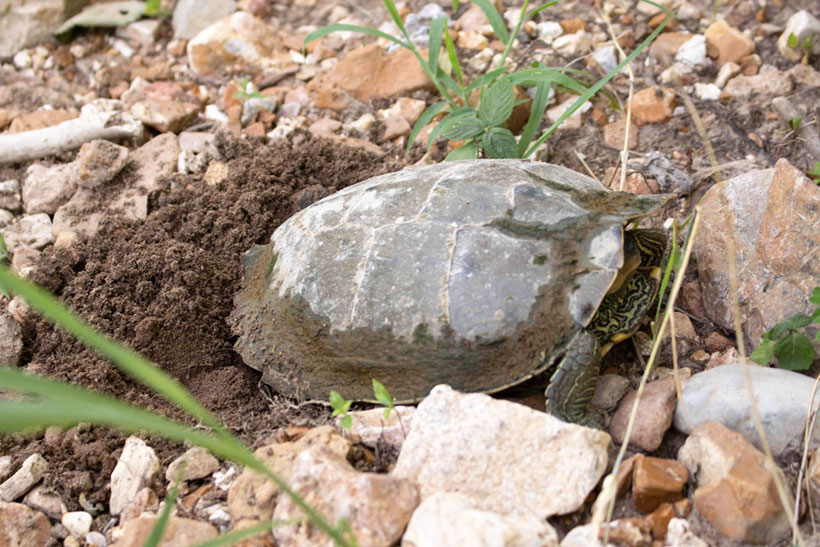
Trout Parks in Missouri
This is the time of year when the only way to enjoy time outdoors is to have all or part of your body immersed in water. It’s the perfect time of year to immerse yourself in one of Missouri’s many trout waters.
The Show-Me State has a wealth of trout-fishing options, thanks to five cold-water hatcheries operated by the Missouri Department of Conservation (MDC). Missouri’s four trout parks – Bennett Spring, Meramec, Montauk and Roaring River – each has an MDC hatchery to supply its needs, and MDC’s huge, modern Shepherd of the Hills Hatchery at Branson rears trout for the world-famous Lake Taneycomo trout fishery, plus trout streams and the winter urban trout fishing program in cities around the state. In all, these hatcheries crank out 1.6 million stockers a year. If that number doesn’t astonish you, your astonishment threshold is much lower than mine!
But that’s just a number. The proof of Missouri’s trout fishing is in the catching, and the catching is good. The daily limit in trout parks is four fish. If you are willing to rise early and know what you are doing, it’s no great challenge to hit this mark. Savvy trout anglers know that the water just outside trout park boundaries can be even more productive than fishing inside the parks.

This raises the question of permits. You need a daily trout tag ($3 for adults, $2 for anglers 15 and younger) to fish inside trout parks. You don’t need this tag outside the parks, but you do need a fishing permit if you are age 16 through 64. Also – very important – you need a Trout Permit ($7 for adults, $3.50 15 and younger) if you want to keep trout caught anywhere outside of trout parks.
There is some fine print to consider at Roaring River State Park, and you would do well to acquaint yourself with special regulations that apply on the 23 blue-, red- and white-ribbon trout streams. All this is listed in the annual Summary of Missouri Fishing Regulations, which is available wherever fishing permits are sold or at www.mdc.mo.gov.
It’s worth noting here that while MDC operates hatcheries at Missouri’s trout parks, it does not own the parks. Meramec Spring Park, just outside St. James, is owned and operated by the James Foundation. The other three are owned and operated by the Missouri Department of Natural Resources (DNR). In addition to trout fishing, these state parks offer park stores with fishing gear tailored to local conditions, restaurants, swimming pools, hiking trails and campgrounds and cabins where you can retire for cool beverage.
Believe it or not, the DNR might have to shutter its trout parks if park-loving voters fail to turn out for Missouri’s general election November 8. The November ballot will include a vote on whether to renew the one-tenth of 1-percent sales tax for parks, soil and water. This tax comes up for renewal by voters every 10 years. The tax provides about three-quarters of the operating budget for state parks, so you can bet that most of the parks and trails will be closed should the tax fail to get a majority of voters’ approval.
This proposition will be titled “Constitutional Amendment 1.” The DNR will be forced to shut down or dramatically reduce fishing opportunities at Bennett Spring State Park, which has been a haven for Missouri anglers for 93 years, if the parks tax fails to get voter approval. If you value this legacy, tell everyone you know to vote yes to extend the tax for another 10 years.
But I digress. My personal favorite among Missouri’s incredible array of trout waters is the North Fork of the White River. This gorgeous stream meanders through Douglas and Ozark counties on its way to Lake Norfork. The 8.6-mile stretch of the North Fork from the upper outlet of Rainbow Spring to Patrick Bridge is a designated Blue-Ribbon Trout Management Area. That means anglers can only use artificial lures and flies, you can only keep one trout a day, and it must be at least 18 inches long. In practical terms, this guarantees a high-density of 12- to 18-inch trout and superb catch-and-release fishing. It also ensures there are plenty of adult trout to spawn each year and maintain the North Fork’s wild trout population.
Trout caught here and in Missouri’s other wild trout streams are impossible to confuse with hatchery-reared fish. Their colors are beyond belief, and their flesh – if you catch a keeper and can bring yourself to eat it rather than taking it to a taxidermist – is simply out of this world. It has the color of wild-caught salmon and rich, complex flavor. Smoked on a charcoal grill, it puts store-bought product to shame.
The Summary of Fishing Regulations has a wealth of information about the North Fork and other Missouri trout waters. After perusing it in the air-conditioned comfort of home, grab your fishing gear and wade into the chill waters of your chosen stream for some of the world’s best trout fishing.






